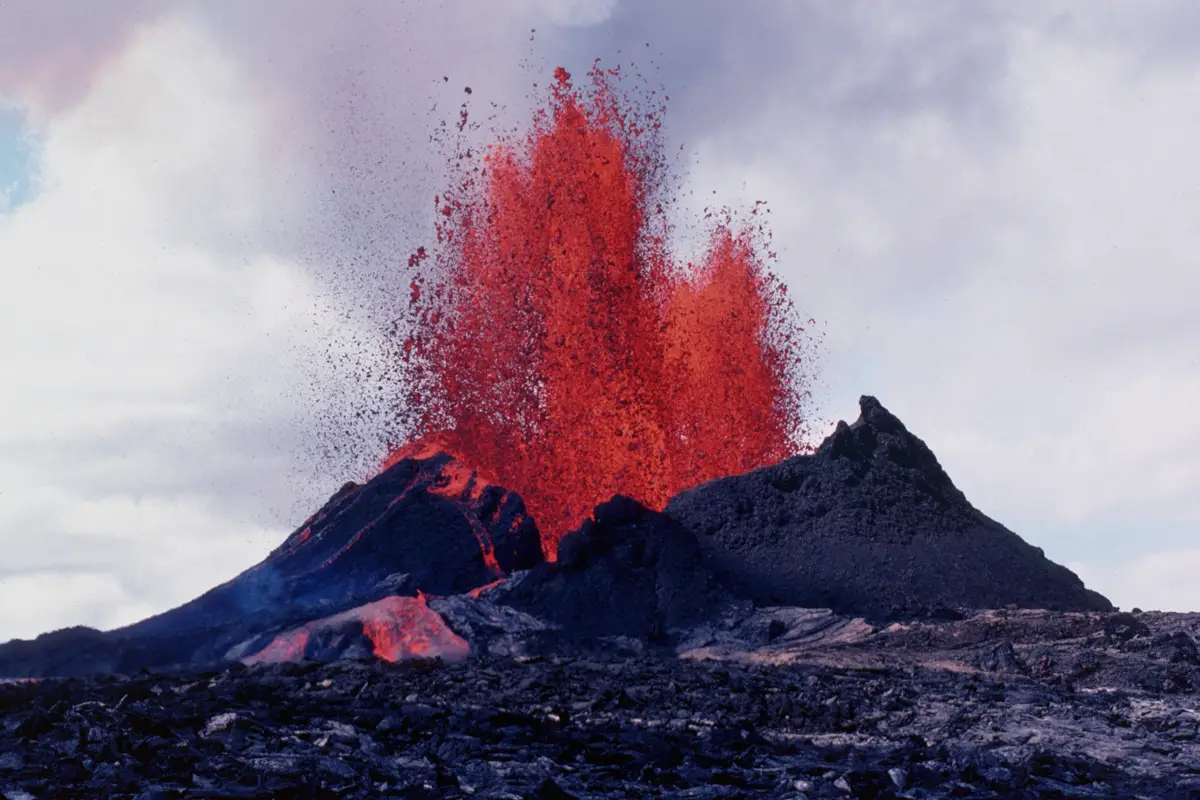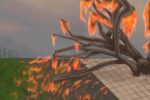Ever since May 3, 2018, the news has been littered with articles about Kilauea, the volcano located in Hawaii that erupted and is still causing panic in the area. Typically, when people think about natural disasters, earthquakes and hurricanes are the two disasters that come to mind, not volcanic eruptions. But, with Kilauea still causing problems, it makes you think about what other dangerous volcanoes should people be worried about.
Although Kilauea is one of many volcanoes, its location in the “Ring of Fire” is a factor to pay attention to. Located around the Pacific Ocean, the “Ring of Fire” is a series of volcanoes that stretch across 25,000 miles, comprising of 75 percent of the world’s volcanoes.

Even though Hawaii is in the middle of the Pacific, an eruption on the island causes concern for neighboring volcanoes along the ring. Due to a chain reaction, one eruption could turn into more. Having that in mind, here are five potentially dangerous volcanoes that people should be concerned about erupting next.
1. Mauna Loa Volcano
https://www.instagram.com/p/BGM-X8XC3Mn/?taken-at=263647511
Roughly 20 miles or so from Kilauea in Hawaii, Mauna Loa, or “Long Mountain,” is the world’s largest active volcano, which last erupted in 1984. Although that was 32 years ago, one volcanic eruption has the power to cause a chain reaction of eruptions. Since Mauna Loa is so close to Kilauea, there is a high probability that it could be next to erupt.
Even before Kilauea exploded, Mauna Loa had a yellow warning in effect which already made it advisory to keep an eye on. According to the United States Geological Survey (USGS), a science bureau that collects data on natural hazards, a yellow warning means that the volcano is displaying signs of higher levels of unrest than previously noted.
Being the largest volcano in the world, Mauna Loa has a steep slope which allows lava to travel great distances as well as move faster and has notably produced large volumes of lava. Ultimately, an explosion from the volcano could be disastrous on top of Kilauea for the island.
2. Mount Cleveland Volcano
https://www.instagram.com/p/Bg_9BL6gPTB/?taken-at=1018643076
Found in the Aleutian Islands of Alaska, Mount Cleveland is one of the most active volcanoes in the central part of the Alaskan islands. As of May 6, 2018, Mount Cleveland has a yellow advisory warning.
Two days prior, it was a color code orange report. While yellow entails that signs of unrest have risen, orange indicates that the level of unrest of the volcano has escalated greatly and the potential for eruption is high or already underway.
Looking at Mount Cleveland’s color code timeline, the volcano has fluctuated between yellow and orange advisories for a while, ranging from days to weeks between the changes. In spite of this pattern, the volcano has been yellow since the Kilauea eruption which is good news, but, as stated before, one eruption has the chance to cause a domino effect for volcanoes.
Because of Kilauea and Mount Cleveland’s own mini eruption on May 4, the volcano has been monitored daily. Over the past few days, the Alaska Volcano Observatory has noted that the volcano has been steaming and that surface temperatures have risen.
An interesting aspect of the volcano is that it is in the path of aircrafts that are traveling from North America to Asia. So, an eruption from Mount Cleveland would threaten air traffic and could damage the exterior of an aircraft. In light of the recent activity and the dangers Mount Cleveland poses, it’s one volcano that people should keep their eyes on.
3. Mount St. Helens Volcano
https://www.instagram.com/p/Biw1D-snVSD/?taken-at=237571414
According to American officials, Mount St. Helens is “the most likely of the contiguous U.S. volcanoes to erupt in the future.” Located in Skamania County, Washington, the volcano is widely known for its deadly eruption in 1980, which is the deadliest and most economically destructive volcanic eruption in the history of the United States.
Currently, its last eruption was in July 2008, but in January 2018, the region experienced 40 earthquakes in the span of three days. Volcanoes and earthquakes go hand-in-hand with each other because of their locations on tectonic plates. As noted in April of 2017, swarms of earthquakes like the ones that occurred a few months ago are signs of magma chambers beneath the earth refilling.
So, while activity regarding volcanic eruptions isn’t physically present, the swarms of earthquakes are a sign that an eruption is definitely in the future. Because of this, scientists have been monitoring the volcano since its last eruption. Hopefully, the next eruption won’t be as devastating as the one in 1980.
4. Karymsky Volcano
https://www.instagram.com/p/BA95VXjEqKV/?taken-at=600963802
Located along the “Ring of Fire” in Kamchatka, Russia, Karymsky Volcano has been flagged as code orange for a while. In the Kamchatka region, Karymsky is one of the volcanoes with persistent activity that has been occurring since the 18th century. Ultimately, the likelihood for eruption is high and reports show that ash plume of varying heights could occur at any time.
During an eruption in 1996, about 100 underwater bursts in the Karymsky Lake caused tsunami waves of 15 feet to occur. Also, the bursts heated the lake, causing it to reach boiling which killed all life that inhabited it as well as making the landmark the biggest natural reservoir of acid water.
In this case, the damage caused the extinction of sock-eyed salmon that were cultivated by ichthyologists, who are zoologists that deal specifically with fish. While this is an example of damage done in the past, it shows the destructive nature of a volcanic eruption.
Currently, reports of plumage have been noted and it’s very likely that Karymsky’s status will shift from orange to red, which would mean it’s erupting.
5. Klyuchevskoy Volcano
https://www.instagram.com/p/BXtqE7sAMsW/?taken-at=577666007
Another volcano located in Kamchatka, Klyuchevskoy is the highest one in the area. Recently, the color code was raised from yellow to orange with reports of a gas-steam plume containing some ash extending twenty kilometers from the peak. At any time, ash explosions of varying heights could occur.
Consequently, the clouds emanating from the volcano could disrupt local airlines depending on the height and length the ash clouds could be. Because of the reported signs, Klyuchevskoy has been monitored daily for some time now.
Leading up to the eruptions in 2013, 2015 and 2016, the same pattern of smoke and ash plumes occurred before the actual eruption with lava, as noted in pictures taken. Keeping this in mind, it’s highly likely that Klyuchevskoy could erupt this year, since it didn’t last year.
At the moment, the volcanoes highlighted above are just five out of hundreds of volcanoes around the world. Since Kilauea erupted the other week, people were reminded of the power and destruction that can be caused by volcanoes. But with one eruption, more could follow and these five dangerous volcanoes are potential candidates for the next one.

















